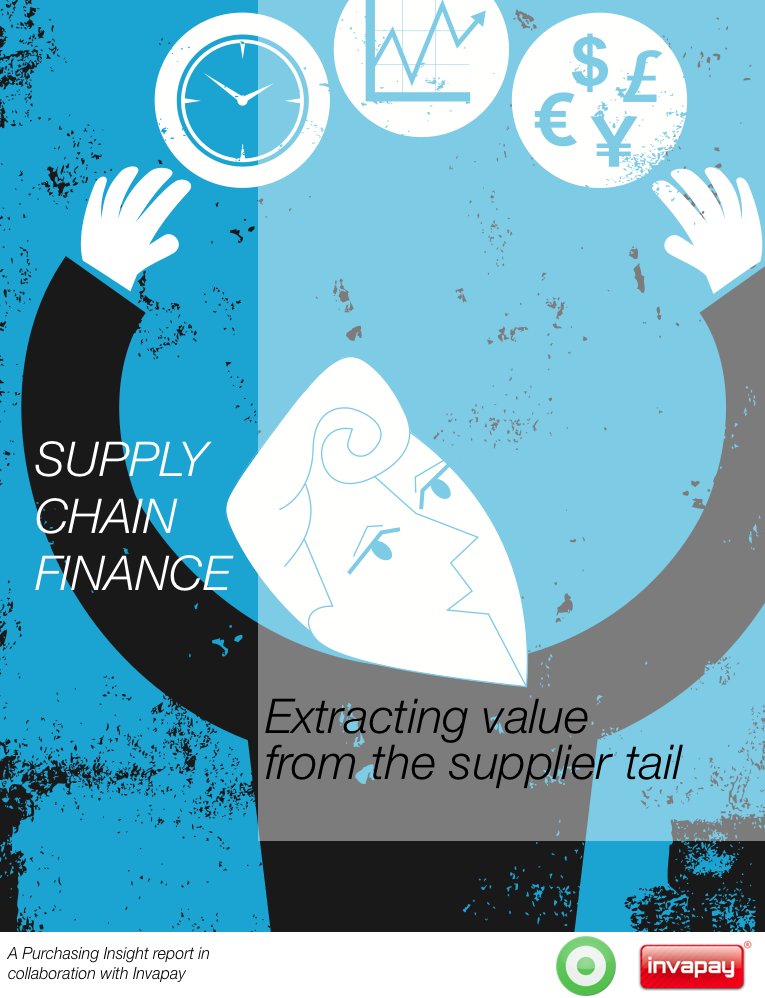
Supply Chain Finance
10 May Taulia extends its global footprint
Posted at 09:10h
in Dynamic Discounting, e-invoicing, Electronic Invoicing, Purchase to Pay, Supply Chain Finance
Taulia today have announced it has expanded its global capabilities. Now available in 12 languages and 50 currencies, Taulia is already widely available across Europe and North America and now the company is expanding to Asia with the addition of simplified Chinese to its platform.
08 May Working Capital Management – going beyond DPO
Historically, Supply Chain Finance was very much supplier led. The aim was to extract value from unpaid invoices. By selling the outstanding invoices to the bank, a supplier can receive payment immediately. Of course there is a cost involved but faced with a wages bill due next week and an large order that needs fulfilling yesterday, immediate payment can be highly valuable even at what might be an equivalent annualized cost in excess of 20%. In it’s place and at the right time, it’s a powerful tool but it works best for suppliers with high values or volumes of transactions.07 May Supply chain finance – are you ignoring your greatest source of saving?
Supply chain finance is increasingly seen as a source of significant saving. By using supply chain finance tools and techniques, whether that’s simply managing payment terms better or whether it is by using more sophisticated techniques like dynamic discounting or reverse factoring, significant commercial benefit can be derived. Treasury managers are taking it more seriously but in many cases they are ignoring one of the biggest sources of saving and it’s right under their noses.04 May Free supply chain finance white paper
 Supply Chain Finance and Working Capital Management are important tools for any business and in 2012, there are compelling reasons why now is the time to adopt financial supply chain management tools in earnest and today we are delighted to make available a new white paper "Supply Chain Finance - extracting value from the supplier tail"
There is an economic perfect storm. A combination of constrained liquidity – business struggling to maintain a line of credit – and very low interest rates. This makes it less attractive for businesses to hold on to cash but very expensive to borrow.
The ability for a buying organization to leverage Supply Chain Finance is predicated on the assumption that you are able to manage accounts payable efficiently and effectively, which in turn is reliant on purchase to pay process being sound. This is rarely the case and poor P2P processes can be a serious blocker for some areas of spend.
But not all areas of spend are created equally. For some categories of spend the balance of power between the buyer and supplier can make strategic relationships untouchable and, where hard core supply chain process are in place, the complexity of the P2P process makes it difficult to manage.
Supply Chain Finance and Working Capital Management are important tools for any business and in 2012, there are compelling reasons why now is the time to adopt financial supply chain management tools in earnest and today we are delighted to make available a new white paper "Supply Chain Finance - extracting value from the supplier tail"
There is an economic perfect storm. A combination of constrained liquidity – business struggling to maintain a line of credit – and very low interest rates. This makes it less attractive for businesses to hold on to cash but very expensive to borrow.
The ability for a buying organization to leverage Supply Chain Finance is predicated on the assumption that you are able to manage accounts payable efficiently and effectively, which in turn is reliant on purchase to pay process being sound. This is rarely the case and poor P2P processes can be a serious blocker for some areas of spend.
But not all areas of spend are created equally. For some categories of spend the balance of power between the buyer and supplier can make strategic relationships untouchable and, where hard core supply chain process are in place, the complexity of the P2P process makes it difficult to manage.
11 Apr How dynamic discounting saved millions
I’ve heard more reasons why not to use supply chain finance than I’ve heard good reasons to use it. The problem appears to be that those advocating it are the sales people. They would say that wouldn’t they? And those arguing against it are the accountants and treasury managers – and they’re the “experts”. What we don’t get to hear is a real example of what it can deliver. Until now.27 Mar OB10’s facelift and a clue about something more interesting
Posted at 18:57h
in e-invoicing, Electronic Invoicing, Financial Supply Chain Management, Supply Chain Finance
There has been some criticism of OB10's user interface and so their users are likely to be pleased at the announcement today of a new version of their portal which, according to the press release, will "enhance the user experience, bring further efficiencies and transparency to the purchase-to-pay process, and deliver ground-breaking new services."
